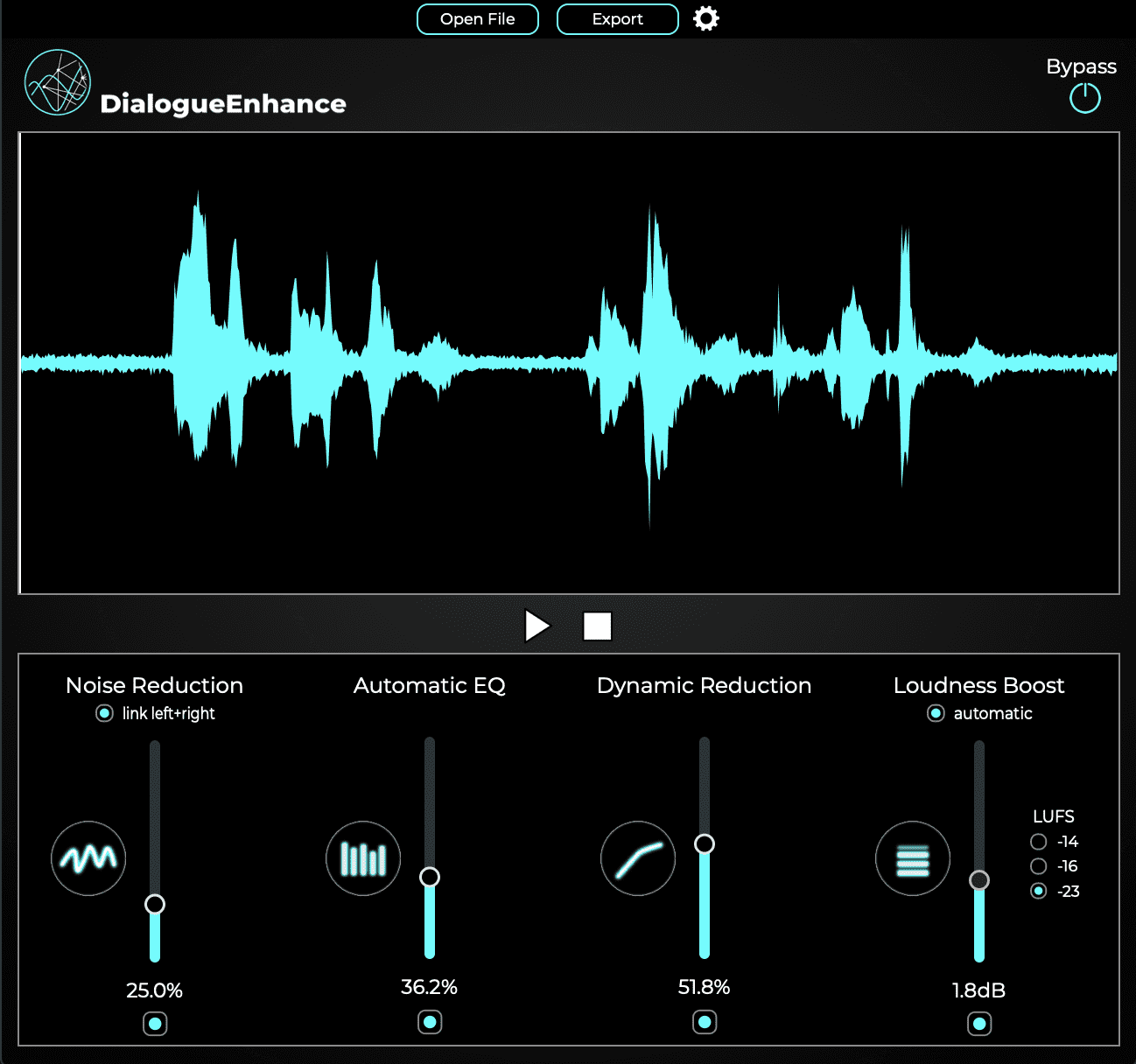Did you know that sound can be modulated using a plugin? Sound modulation is the process of changing one type of sound to create an entirely different one. It is often used in video games but has many other applications as well. For example, it’s possible to change the pitch or volume of a guitar riff to make it seem like it’s being played by an orchestra or choir. In this article, I’ll show you how to use a plugin to modulate sound.
How do you modulate sound?
Modulating sound can be done using a variety of different methods. The most common method is amplitude modulation (AM), which increases and decreases the volume of an audio signal over time to create new frequencies or notes. There are other ways to modulate, such as frequency modulation (FM) which changes the tone of sound by raising or lowering its frequencies. FM is especially useful in video games because it allows you to create sounds that change pitch depending on the action occurring on-screen. Another method of sound modulation is called ring modulation, which combines two audio signals to create new, often dissonant tones. This technique is commonly used in experimental music and sound design. Additionally, using convolution reverb can also be effective in making realistic sound effects, by applying the acoustic properties of one sound to another, giving the impression that a sound was recorded in a specific space.
There are several different types of modulation plugins available, but some work better than others for certain applications. For example, sine wave generators allow you to add more depth and richness by changing or adding notes while ring modulators can be used to create “unearthly” sound effects based off any input signal (sounds like something out of a sci-fi movie). The most common type of plugin I use is an envelope follower which calculates volume over time using parameters set by me so that when my mouse moves across the screen, the sound changes accordingly! This lets me play around with game design without actually playing the game!
How do you use it?
The process of sound modulation is simple. You simply insert your plugin on an instrument track, choose which parameters to modulate (in this case volume), and select how often the change occurs (this can be done manually or automatically). It’s important to note that most plugins will have a latency period where they need time in order to calculate changes over time. This usually isn’t very long but if you notice any delay when using these types of plugins then just turn down “change per step” until it seems more responsive. Once everything is set up, all you need to do is play around with mouse movements across different parts of the screen while adjusting parameters to get the sound you want!
What are some applications?
While modulation plugins can create a lot of interesting effects, they’re not necessarily very practical. For example, it would be difficult to use an envelope follower plugin on your entire mix or instrumental track because it would constantly change every time any parameter was changed. Instead, these types of modulators work best when implemented in specific places like video game design where characters and objects produce different sounds depending on their actions. Another popular application is for drum tracks which will trigger changes based on velocity (how hard someone hits a key). Since most instruments respond well to volume changes over time this makes them great candidates for that type of effect. Furthermore, I’ve found that frequency modulation works great on vocal and guitar tracks as well.

What other types of modulation exist? Modulating sound using a plugin is not the only way to change or create new sounds! There are two main methods that I’ll describe briefly: sample playback and granular synthesis. Sample playback simply means playing back samples (audio files) such as drum beats, instruments, or vocal performances which can then be manipulated by changing their speed, direction, or pitch.
Although this method doesn’t produce any additional frequencies it does allow for an interesting variety in terms of what you can do with your song since there’s nearly no limit to how many different variations each instrument will have depending on the type and size of the file used. Granular synthesis works differently than either amplitude modulation or sample playback because it takes small bits of sound, usually less than a second long, and repeats them to create new sounds. This can either be done by changing the pitch or direction (forward/backward) but is most commonly implemented by adding multiple copies together to make something completely original! I hope these examples help give you some ideas on how modulation plugins might work for your next project!
Modulate Sound Using Your Plugin Effects
Ring Modulators are used to create “unearthly” sound effects based on any input signal. There are several different types of modulation available that can change tone depending on what’s happening in video games. For example, sine wave generators allow you to add notes while ring modulators produce sci-fi-like effects.

We did cover many different sound effect plugins on StrongMocha, there are literally thousands of plugins out there.
Drums, did somebody say improved drums sounds.
Another popular application is for drum tracks that trigger changes based on velocity (how hard someone hits a key). Since most instruments respond well to volume changes over time this makes them great candidates for that type of effect. Furthermore, I’ve found that frequency modulation works great on vocal and guitar tracks as well!

Is reverb a modulation effect?
No, reverb is an effect that simulates different acoustics spaces. It’s very popular to use as a modulation plugin for adding extra depth and space!

What other types of modulation exist? There are two main methods that I’ll describe briefly: sample playback and granular synthesis. Sample playback simply means playing back samples (audio files) such as drum beats, instruments or vocal performances which can then be manipulated by changing their speed, direction or pitch.
Although this method doesn’t produce any additional frequencies it does allow for an interesting variety in terms of what you can do with your song since there’s nearly no limit to how many different variations each instrument will have depending on the type and size of the file used. Granular synthesis works differently than either amplitude modulation or sample playback because it takes small bits of sound, usually less than a second long, and repeats them to create new sounds.
This can either be done by changing the pitch or direction (forward/backward) but is most commonly implemented by adding multiple copies together to make something completely original! I hope these examples help give you some ideas on how modulation plugins might work for your next project!
What happens in over modulation?
Over modulation results in a signal that is much louder than the original source. This can be useful as it simulates an overdriven guitar or amplifier but too much of this effect can sound like distortion to your ear! Overmodulation occurs when the instantaneous level of the modulating signal exceeds the critical value for 100% modulation of the carrier. Overmodulation causes spurious emissions from the modulated carrier as well as distortion of the recovered modulating signal.
What is the purpose of modulation?
Modulation changes the characteristics of a signal such as amplitude, frequency, and phase. Modulation allows you to use one waveform to produce an entirely different sound! Modulation is the process of changing or varying something for better effect, like an instrument that can be played in many different keys.
A carrier wave should not just send information; it also impresses this data on its vibrations so people listening will understand what you’re saying more easily when all their other senses are distracted by sound waves themselves!
In radio communication, the modulated carrier is transmitted through space as a radio wave to a radio receiver. A messaging service is a way to deliver information from one location, to another.
Which modulation effect is used for reverb?

How do you do EQ effects?
EQ effects are used to change the tone of a sound, usually by boosting or reducing certain frequencies. Depending on how you configure these plugins they can be used for anything from adding extra bass to your kick drum or making your voice stand out in a song! An EQ is an audio effect and its purpose is to provide general equalization for shaping the frequency content of an audio signal such as changing resonant frequencies (boosting/reducing specific bands), balancing overall levels, compensating for unequal response across different speaker drivers, etc. Modulation Effects

Which equalizer setting is best?
Different Equalizer setting is best depending on what you’re looking for. An Equalizer is a set of audio filters which alters the frequency response. The best way to use them is to make small, subtle adjustments and then monitor what they do using solo or bypass controls on your mix channel. If you’re looking for a specific effect that only certain frequencies can provide try out some different ones within your plugin!
Well, you have to understand the EQ is a piece of software that takes your sound and tweaks its frequency.
The goal with an equalizer will be for it to make different frequencies stand out more or less depending on what type of music we are listening to. but not in such a way as they become overwhelming! In order words there is no needóand I mean none at all–to turn up loud just so everyone can hear yourself talk when using these devices because everything from vocals down through guitars would already come across clearly enough without any boost added onto them from inside our own little world
Since the beginning of time, man has sought to improve their lives through technological innovation. The one invention that will change everything for good is electric EQs; they can make or break any sound by cutting out frequencies inaudible to humans like waves crashing on shorelines at night when you’re trying desperately not to fall asleep yet feeling vulnerable because it’s dark outside and no lights are lit up your street but there must be somebody else around somewhere who might save us if this goes too long without interruption.
You don’t really want to distort your music, but you have a lot of control over it. Plus this way when the EQ changes it’s no longer plays exactly how something was recorded.










